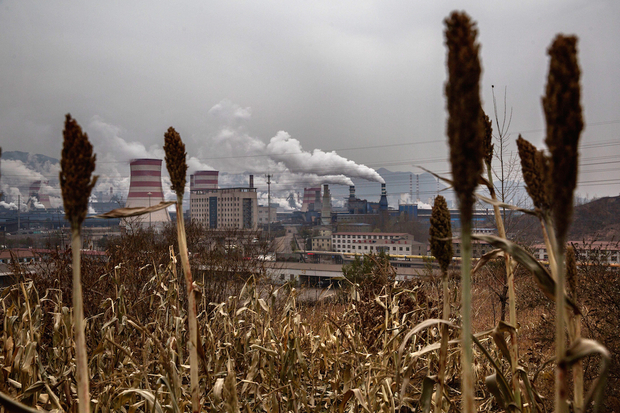Global carbon dioxide emissions from burning coal, oil, and gas as well as from industrial activities grew by just 0.6 percent in 2014, according to researchers from the Global Carbon Project of the organization Future Earth.
The researchers say emissions have grown even more slowly this year, and may even show a small decrease of 0.6 percent by the end of this year.
Carbon dioxide emissions account for the majority of greenhouse gas emissions that are warming the earth. Climate change is reducing farm output worldwide, intensifying storms, floods, and droughts and raising the global sea level. For the billions of people who rely on monsoons, climate change is making rainy seasons shorter, but with more intense rainfall.
So a small increase in emissions or even a possible drop is positive news. But there is no cause for celebration, the researchers warned, as they released their report on the sidelines of the November 30-December 11 U.N. climate summit in Paris (COP21).
Concentrations of greenhouse gases (GHGs) passed the 400 parts per million stage in 2015, its highest in 800,000 years. This is close to a tipping point beyond which climate change could be catastrophic in many parts of the planet, the U.N.’s climate science panel has warned.
Only drastic cuts in global CO2 over the next few decades are likely to put the world on a path to cap an average rise in global temperatures to 2 degrees Celsius, but the Paris summit is unlikely to agree to cuts anywhere near what is required, while a 1.5 degrees Celsius threshold insisted upon by small island states would be increasingly out of reach in a modest agreement.
Study leader Corinne Le Quéré, Director of the U.K.’s Tyndall Centre at the University of East Anglia, said at an event to publicize the release: “With two years of untypical emissions growth, it looks like the trajectory of global emissions might have changed temporarily. It is unlikely that emissions have peaked for good. This is because energy needs for growing economies still rely primarily on coal, and emissions decreases in some industrial countries are still modest at best.”
China’s Curbs on Coal
The projection for 2015 is based on available energy consumption data in China and the U.S., and on forecast economic growth for the rest of the world. Le Quéré said: “The projected decline is largely due to China’s decreased coal use, driven by its economic adjustment. Whether a slower growth in global emissions will be sustained depends on the use of coal in China and elsewhere, and where new energy will come from.” In 2014, more than half of new energy needs in China were met from renewable sources such as hydro, nuclear, wind, and solar power, she added.
The study—also published in Nature and Earth System Science Data—shows that the biggest contributors to global emissions in 2014 were China (27 percent), the U.S. (15 percent), the E.U. (10 percent), and India (7 percent).
Typically, carbon dioxide emissions have only declined during periods of economic crisis, such as that which occurred between 2007 and 2008. But this would be the first decline during a period of global economic growth.
Le Quéré pointed out that the average annual growth in emissions since 2000 has been 2-3 percent. “It is important to remember that our projection for 2015 is an estimate, and there will always be a range of uncertainty. In this case, the 2015 projection ranges from a global decline in emissions of up to 1.5 percent—or at the other end of the spectrum, a small rise of 0.5 percent.”
Robert Jackson of Stanford University, co-chair of the Global Carbon Project, pointed to slower global growth in petroleum use in 2014 and faster growth in renewables. Wind and solar capacities saw record increases in capacity last year and are on track to be even higher in 2015, he added.
No Room for Complacency
The news about the stall in global carbon emissions was welcomed by Prakash Javadekar, India’s Minister for Environment, Forests and Climate Change. He hoped that industrialized countries will soon reduce their emissions further so that developing countries have more space to grow their economies and provide electricity to those still without it.
As negotiators from 195 governments struggled to put together an accord to combat climate change-controlling emissions will be the major part of the accord, Le Quéré warned against the study leading to complacency.
“Global emissions need to decrease to near zero to achieve climate stabilization,” he said. “We are still emitting massive amounts of carbon dioxide—around 36 billion tonnes from fossil fuels and industry alone every year. There is a long way to near zero emissions.”
“Today’s news is encouraging, but world leaders at COP21 (the climate summit) need to agree on the substantial emission reductions needed to keep warming below 2C,” Le Quéré added.
Paul Shrivastava, Executive Director of the Future Earth project, said, “It is the first real indication that the global economy can begin the path towards decarbonization. China must be applauded. Its efforts are both Herculean and unexpected.”




